The Catalyst Killing - [45]
VII
It was with a degree of awe, as well as some dread, that I knocked on the door to Asle Bryne’s office in Victoria Terrace at exactly six o’clock. I had never spoken to the revered head of police security before, but had heard his voice on the radio and seen his face in the papers. He had, whether it was justified or not, acquired a reputation for being alternately temperamental and uncommunicative.
My first impression was that he was relatively calm. His jet-black eyebrows were even bushier than I had imagined, and his face was unexpectedly controlled for the moment. He nodded briskly at a chair in front of his desk and when I held out my hand, gave it a firm, equally brisk shake. He had a pipe in the corner of his mouth and his eyes followed my every movement as I sat down.
I started by introducing myself and the case in brief. He nodded and replied curtly that he was of course familiar with it. I did not venture to ask him how. Instead I got straight to the point and asked if he could tell me about Marie Morgenstierne and the rest of the circle around Falko Reinhardt.
The head of the police security service was, as expected, well prepared. His answer was brief: that they would of course be happy to help with the murder investigation, but that the security service had to follow strict procedures when it came to divulging information. Then he said nothing more.
In answer to my initial question as to whether the police security service had the group under surveillance, he answered, ‘yes, of course.’ When I asked if this was the case both before and after Falko Reinhardt had disappeared, he replied, ‘yes, of course.’
Bryne exhaled some smoke from his pipe following these two succinct replies and paused for thought. Then he added, with a bit more vigour: ‘The greatest threat to our country is still from the supporters of Moscow communism. The second greatest threat is probably the Peking communists. We would therefore clearly be neglecting our duty to our country and its people if we did not keep our eye on a group that was trying to worship both Moscow and Peking at the same time.’
When I asked whether the police security service had at any point received information from members of the group, Asle Bryne replied brusquely that he could under no circumstances comment on that. He added that the security service was dependent on getting information from a range of different sources, and that it could have disastrous consequences if these sources were identified and at risk of being made public.
I permitted myself to remind him that this was after all a murder inquiry and for the present would only involve one policeman and some confidential information.
No more was needed for Asle Bryne’s temperament to make an appearance. He suddenly leaned forward in his chair and launched into a lengthy tirade about the security service’s responsibilities, the essence of which was that they were the country’s only hope in the fight against communist infiltration and Soviet occupation, and that they therefore needed room for manoeuvre without any interference from either politicians or the other police organs.
I waited until he started to calm down. Then I asked if they had found anything to indicate that this small group of students had contacts abroad, or constituted a threat to the status quo in Norway. This unleashed another almost equally violent eruption behind the cloud of smoke. The fact that they did not always uncover something in the short term should not fool anyone into relaxing their focus on potentially violent terrorist groups. Furthermore, it was better that ten innocent groups were kept under surveillance than that they did not watch the one group that might prove to be a real threat to society.
I took this as a ‘no’, and quickly carried on when he paused for breath a couple of minutes later. I told him that I fully understood that the security service could not reveal their contacts and that I could see why they had kept the group under surveillance – which could in fact be of great benefit to the investigation. I therefore would dearly like to know what the security service knew about Falko Reinhardt’s disappearance and the murder of Marie Morgenstierne.
Asle Bryne took a couple of deep breaths, nodded – and made an attempt to answer my request. He assured me that as long as one respected the security service’s situation and work methods, they would of course be more than happy to do what they could to help solve any crimes that were under investigation by other police divisions.
As far as the disappearance of Falko Reinhardt was concerned, however, the police security service knew nothing about it and had no information that might be of any help.
Again, when it came to the murder of Marie Morgenstierne, no one from the police security service had been in the vicinity. They had, however, successfully bugged the group’s meeting place in Smestad, and could thus provide a recording of the last meeting that Marie Morgenstierne attended. The meeting had been short, and the security service had not picked up anything of interest from the recording. But if it could be of any help to the murder investigation, they would be able to lend it to the head of investigation for a day or two, in the strictest confidence, and on the condition that the tape was returned within forty-eight hours and that no reference was made to it in public.
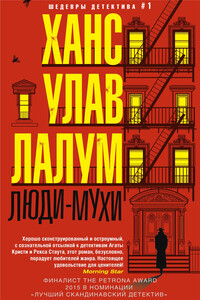
Убит бывший лидер норвежского Сопротивления и бывший член кабинета министров Харальд Олесен. Его тело обнаружено в запертой квартире, следов взлома нет, орудие убийства отсутствует. На звук выстрела к двери Олесена сбежались все соседи, но никого не увидели. Инспектор уголовного розыска Колбьёрн Кристиансен считает, что убийство, скорее всего, совершил кто-то из них. Более того, он полагает, что их показания лживы.
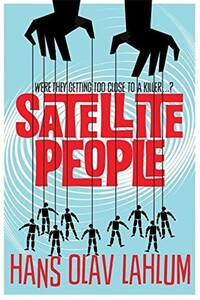
A gripping, evocative, and ingenious mystery which pays homage to Agatha Christie, Satellite People is the second Norwegian mystery in Hans Olav Lahlum's series. Oslo, 1969: When a wealthy man collapses and dies during a dinner party, Norwegian Police Inspector Kolbjorn Kristiansen, known as K2, is left shaken. For the victim, Magdalon Schelderup, a multimillionaire businessman and former resistance fighter, had contacted him only the day before, fearing for his life. It soon becomes clear that every one of Schelderup's 10 dinner guests is a suspect in the case.
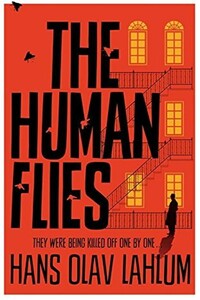
Oslo, 1968: ambitious young detective Inspector Kolbjorn Kristiansen is called to an apartment block, where a man has been found murdered. The victim, Harald Olesen, was a legendary hero of the Resistance during the Nazi occupation, and at first it is difficult to imagine who could have wanted him dead. But as Detective Inspector Kolbjorn Kristiansen (known as K2) begins to investigate, it seems clear that the murderer could only be one of Olesen's fellow tenants in the building. Soon, with the help of Patricia – a brilliant young woman confined to a wheelchair following a terrible accident – K2 will begin to untangle the web of lies surrounding Olesen's neighbors; each of whom, it seems, had their own reasons for wanting Olesen dead.
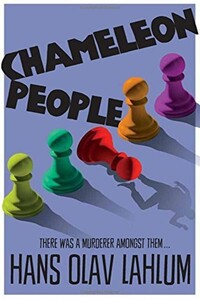
From the international bestselling author, Hans Olav Lahlum, comes Chameleon People, the fourth murder mystery in the K2 and Patricia series.1972. On a cold March morning the weekend peace is broken when a frantic young cyclist rings on Inspector Kolbjorn 'K2' Kristiansen's doorbell, desperate to speak to the detective.Compelled to help, K2 lets the boy inside, only to discover that he is being pursued by K2's colleagues in the Oslo police. A bloody knife is quickly found in the young man's pocket: a knife that matches the stab wounds of a politician murdered just a few streets away.The evidence seems clear-cut, and the arrest couldn't be easier.
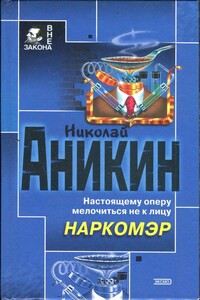
Тупик. Стена. Старый кирпич, обрывки паутины. А присмотреться — вроде следы вокруг. Может, отхожее место здесь, в глухом углу? Так нет, все чисто. Кто же сюда наведывается и зачем? И что охраняет тут охрана? Да вот эту стену и охраняет. Она, как выяснилось, с секретом: время от времени отъезжает в сторону. За ней цех. А в цеху производят под видом лекарства дурь. Полковник Кожемякин все это выведал. Но надо проникнуть внутрь и схватить за руку отравителей, наживающихся на здоровье собственного народа. А это будет потруднее…

«Посмотреть в послезавтра» – остросюжетный роман-триллер Надежды Молчадской, главная изюминка которого – атмосфера таинственности и нарастающая интрига.Девушка по имени Венера впадает в кому при загадочных обстоятельствах. Спецслужбы переправляют ее из закрытого городка Нигдельск в Москву в спецклинику, где известный ученый пытается понять, что явилось причиной ее состояния. Его исследования приводят к неожиданным результатам: он обнаруживает, что их связывает тайна из его прошлого.
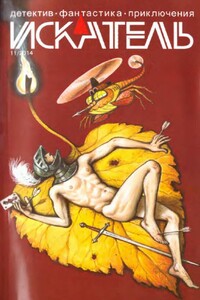
«ИСКАТЕЛЬ» — советский и российский литературный альманах. Издаётся с 1961 года. Публикует фантастические, приключенческие, детективные, военно-патриотические произведения, научно-популярные очерки и статьи. В 1961–1996 годах — литературное приложение к журналу «Вокруг света», с 1996 года — независимое издание.В 1961–1996 годах выходил шесть раз в год, в 1997–2002 годах — ежемесячно; с 2003 года выходит непериодически.Содержание:Анатолий Королев ПОЛИЦЕЙСКИЙ (повесть)Олег Быстров УКРАДИ МОЮ ЖИЗНЬ (окончание) (повесть)Владимир Лебедев ГОСТИ ИЗ НИОТКУДА.
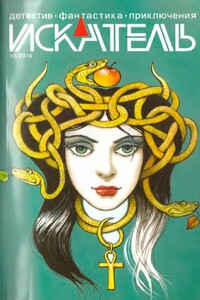
«ИСКАТЕЛЬ» — советский и российский литературный альманах. Издается с 1961 года. Публикует фантастические, приключенческие, детективные, военно-патриотические произведения, научно-популярные очерки и статьи. В 1961–1996 годах — литературное приложение к журналу «Вокруг света», с 1996 года — независимое издание.В 1961–1996 годах выходил шесть раз в год, в 1997–2002 годах — ежемесячно; с 2003 года выходит непериодически.Содержание:Олег Быстров УКРАДИ МОЮ ЖИЗНЬ (повесть);Петр Любестовский КЛЕТКА ДЛЯ НУТРИИ (повесть)
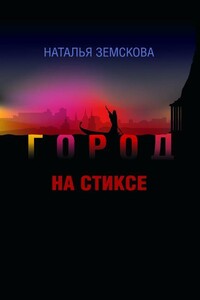
Наталья Земскова — журналист, театральный критик. В 2010 г. в издательстве «Астрель» (Санкт-Петербург) вышел её роман «Детородный возраст», который выдержал несколько переизданий. Остросюжетный роман «Город на Стиксе» — вторая книга писательницы. Молодая героиня, мечтает выйти замуж и уехать из забитого новостройками областного центра. Но вот у неё на глазах оживают тайны и легенды большого губернского города в центре России, судьбы талантливых людей, живущих рядом с нею. Роман «Город на Стиксе» — о выборе художника — провинция или столица? О том, чем рано или поздно приходится расплачиваться современному человеку, не верящему ни в Бога, ни в черта, а только в свой дар — за каждый неверный шаг.
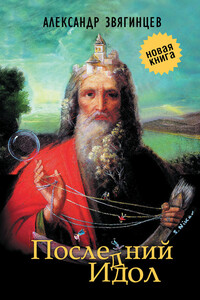
В сборник «Последний идол» вошли произведения Александра Звягинцева разных лет и разных жанров. Они объединены общей темой исторической памяти и личной ответственности человека в схватке со злом, которое порой предстает в самых неожиданных обличиях. Публикуются рассказы из циклов о делах следователей Багринцева и Северина, прокуроров Ольгина и Шип — уже известных читателям по сборнику Звягинцева «Кто-то из вас должен умереть!» (2012). Впервые увидит свет пьеса «Последний идол», а также цикл очерков писателя о событиях вокруг значительных фигур общественной и политической жизни России XIX–XX веков — от Петра Столыпина до Солженицына, от Александра Керенского до Льва Шейнина.